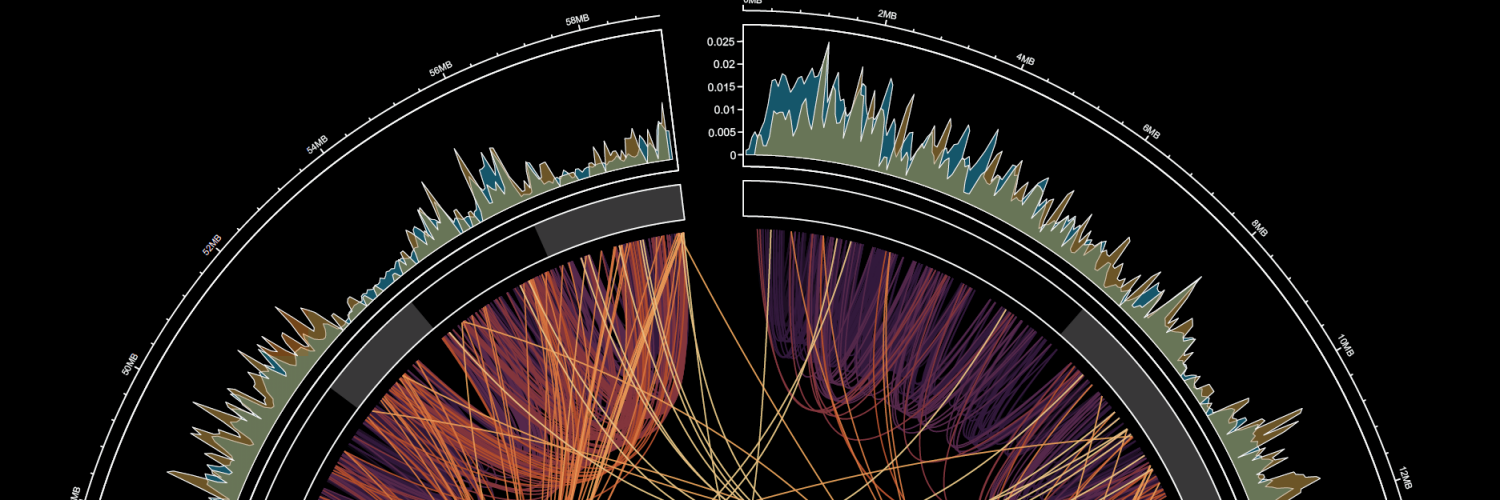The Modern Bioinformatics Stack
 Bhagesh Hunakunti
Bhagesh Hunakunti
Spreadsheets Do Not Count!
As someone who wears the hats of both a Bioinformatician and a developer, I have frequently found myself struggling to navigate and pick what is important and is a priority; Which programming languages to learn from the never-ending options and the ginormous list of biological concepts.

Unlike my previous article where I took a more sarcastic approach to describe bad practices, here I would like to provide essential pointers for aspiring Bioinformaticians and Biotechnologists to help you stay ahead of the curve and avoid confusion that many, including myself, have faced.
What constitutes a "stack"?
In the context of bioinformatics, a "stack" or "tech stack" refers to the collection of programming languages, software, and tools that bioinformaticians use to develop and run software applications specifically tailored for biological data analysis and research. Just as in general software development, this bioinformatics tech stack consists of various layers and components that collaborate to create functional software systems and uphold best practices for handling biological information.
Here's how it applies to bioinformatics:
Data Analysis Layer: In bioinformatics, the primary focus is on processing and analyzing biological data, such as DNA sequences or protein structures. The tech stack includes programming languages like Python, R, or Perl, which are well-suited for data analysis. Bioinformatics-specific libraries and tools, like BioPython or Bioconductor in R, are also part of this layer.
Bioinformatics Tools and Databases: This layer encompasses specialized bioinformatics software and databases designed for biological data retrieval and analysis. Examples include BLAST for sequence alignment, NCBI databases, and specialized databases like GenBank or UniProt.
Data Storage Layer: Bioinformatics often deals with extensive datasets, so efficient data storage and retrieval are crucial. This layer includes databases, such as MySQL or PostgreSQL, or even NoSQL databases like MongoDB, tailored for storing biological data.
Computing Infrastructure: The choice of computing resources is vital in bioinformatics, where complex calculations and simulations are common. Cloud services, high-performance computing clusters, and grid computing are part of the tech stack.
Visualization and Reporting: Bioinformaticians use visualization tools and libraries to interpret and communicate their findings effectively. Tools like Bioconductor, Matplotlib, or ggplot2 help in creating plots and graphical representations of biological data.
Workflow and Automation: In bioinformatics, where repetitive tasks are frequent, workflow and automation tools like Nextflow, Galaxy or Snakemake are included in the tech stack to streamline data processing pipelines.
The bioinformatics tech stack is carefully selected to suit the specific needs of biological research projects, whether it's genomic analysis, protein structure prediction, or phylogenetic studies. It enables bioinformaticians to create software applications that efficiently handle and analyze biological data, adhering to best practices in the field.
The Bioinformatics Stack
Proficiency in Bash Scripting
You need to speak in Bash, it's an absolute must irrespective of which domain or DSL you use, no excuses. Mastering Bash scripting is a non-negotiable skill in the world of bioinformatics. Regardless of your specialization, consider it your essential tool, akin to acquiring a wizard's skill in Parseltongue, the language of snakes.
Effective Communication
as we are on the topic of speaking a different language, never underestimate the power of clear communication. No matter how efficient your pipeline is, it holds little value if you can't articulate its outcomes to biologists or end-users.
One Programming Language to Rule Them All
Focus on becoming proficient in one programming language. It's even better if it's object-oriented with built-in threading and parallelization. Once you've conquered one, grasping others becomes more simple, given their shared logic and principles, despite minor semantic differences.
Containerization and Version Control
It's best practice to containerize your tools and script dependencies. This practice resolves the ever-common "it works on my computer" conundrum, making your work portable and easy to maintain. Additionally, version control tools like Git help you track, revert, reflect, and refactor your code, ensuring you avoid the endless " final.script, working.script, final_working.script, last_final_working.script" naming madness.
Cloud Proficiency
Acquire proficiency in at least one cloud platform. Familiarize yourself with different storage and batch computing options, and concepts related to CI/CD (Continuous Integration/Continuous Deployment). Just as with programming languages, most cloud platforms offer similar resources with differences in terminology.
Biological Concepts
While the depth of knowledge depends on your domain and interests, having a foundational understanding of genomics and Next-Generation Sequencing (NGS) is crucial. You need not be an expert, but you should know enough to explain the outputs of your implemented tools. This includes awareness of any lab practices or potential errors that could affect data quality.
Workflow Management Frameworks
Despite seeming less critical, workflow management frameworks play a vital role. After mastering Bash and a programming language, these frameworks offer an abstraction layer that simplifies the design and automation of data analysis pipelines. They emphasize reproducibility and efficient parallelization.
Your choice between programming languages and workflow management frameworks depends on project requirements, your expertise level, and your focus on reproducibility and automation.
In essence, this practice ensures that your bioinformatics projects are not only well-organized and version-controlled but also benefit from automation and reproducibility, making them more efficient and less prone to errors.
Other tools that some might argue are equally essential include the Conda package manager, data visualization packages, and even SQL. These tools are often acquired during environment setup, development, or when presenting results, and they hold significant importance nonetheless.
In my work, I rely heavily on both Bash and Python, and I have also integrated Nextflow into my workflow. For each project or script I undertake, I make it a compulsive practice to implement Git. This approach allows me to effectively manage multiple projects concurrently and facilitates the implementation of Continuous Integration/Continuous Deployment (CI/CD) processes.
We bioinformaticians are like forces of nature, the unsung warriors who navigate the realms of biology and computer science. We live in a world where excuses, compromise and backing down are not options. Our path is one of relentless pursuit of improvement and perfection.
I appreciate your time and attention in reading this article. I hope you found it useful, and your interest is highly valued.
Subscribe to my newsletter
Read articles from Bhagesh Hunakunti directly inside your inbox. Subscribe to the newsletter, and don't miss out.
Written by

Bhagesh Hunakunti
Bhagesh Hunakunti
I'm a science guy with a creative instinct. Simple-minded & doing what I'm good at & sharing what I've learnt so far with amazing people like you'll.